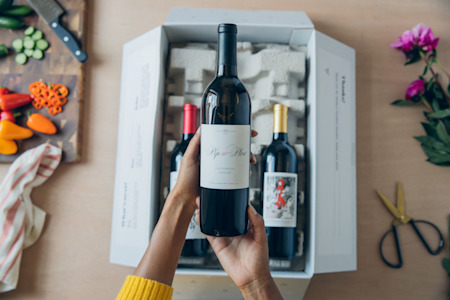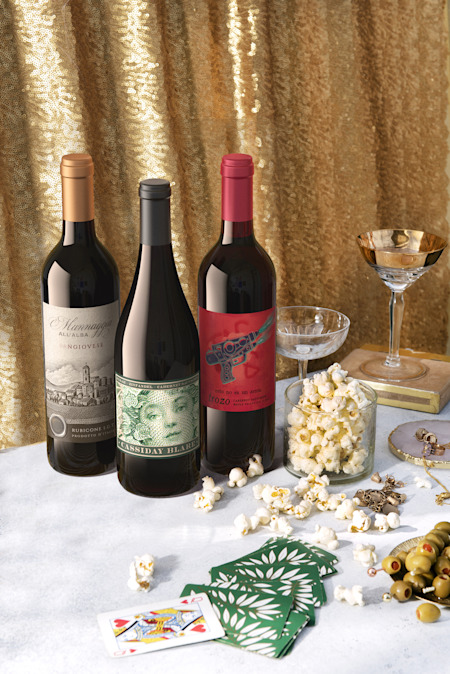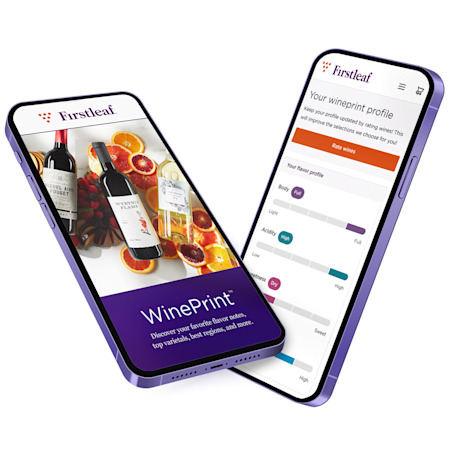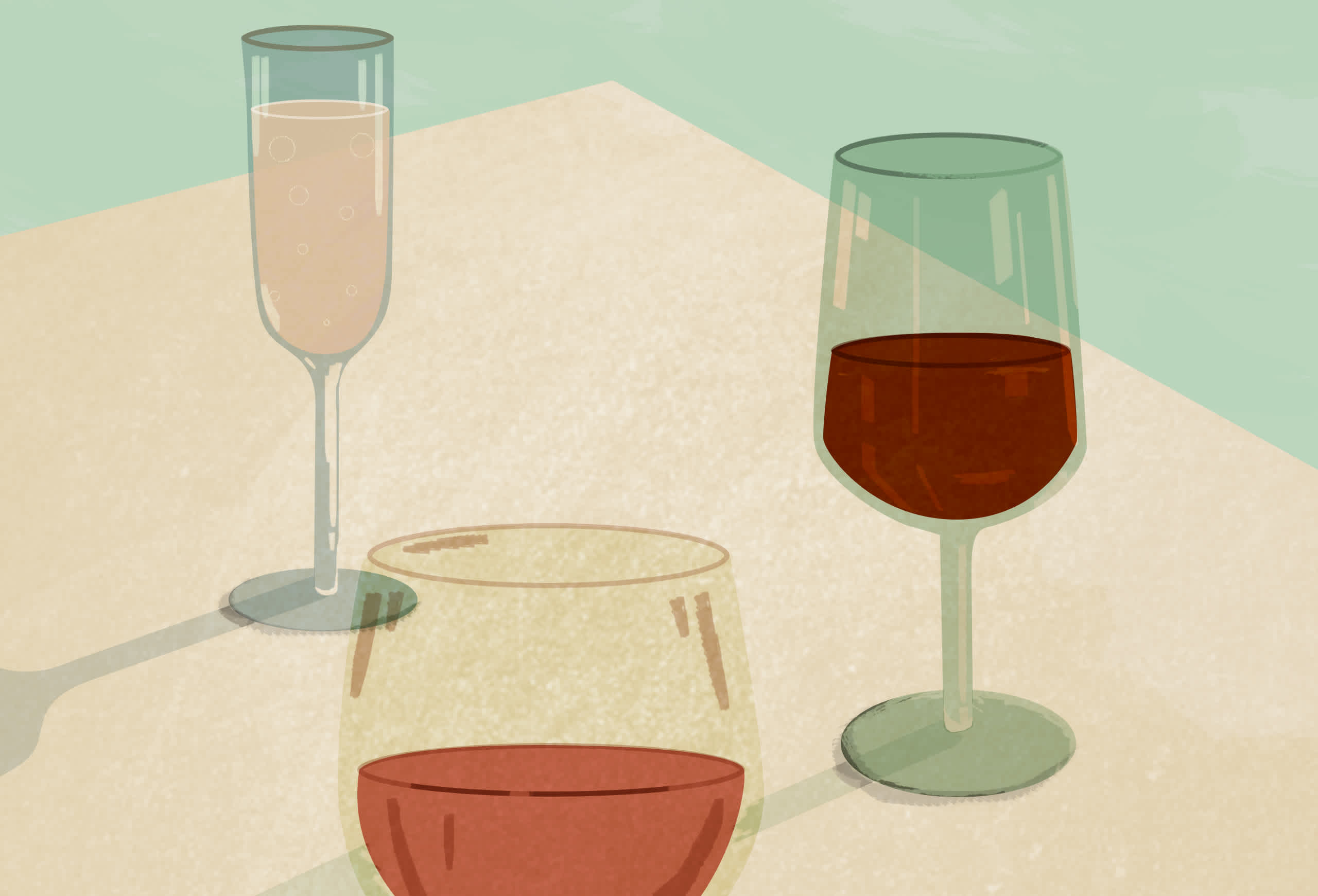How to Serve Wine
Learn the ins and outs of serving wine
Serving wine seems obvious, but even with such simple steps, there are ways to maximize your drinking experience. Knowing when and how to serve wine will only add to your enjoyment.
We have a guide for basic wine service that will help you whether you are serving fine wines or something more pedestrian. Serving wine well can enhance an evening.

Sign up for the Club Today
Join Firstleaf to taste delicious wines from all over the world and learn more about these grapes. The club has featured amazing examples, take the quiz to get the pairings for your individual palate.
Take Our QuizIN THIS ARTICLE:
Storing Wine
The first step to serving good wine is storage. Ensuring that every wine bottle is held correctly will preserve them for the long haul. Most wine is consumed within just a few hours of buying. Winemakers produce the wine to be consumed young, typically within one to three years of being bottled. Even if you don't drink a bottle of wine on the same day you purchase it, there's a great chance it was not meant for long term storage and should be consumed young.
Wine is more easily damaged than most other beverages, so proper storage will ensure that your wine is performing its best when you open it. Learning how to store wine properly is critical to ensuring its quality long term as poor storage conditions can adversely affect your wine experience.
Wine is affected easily by three things: heat, sunlight, and temperature. It is important to always be aware of whine temperature when storing long-term. In a windowsill, the sun shining on a bottle will warm it, and eventually, the heat can cook out some of the more nuanced flavors. The top of the refrigerator is also warm from the motor that keeps the contents inside cool, and can, once again, cook your wine.
Room temperature is too warm for wine storage. Ideally it should be kept between 51°F-59°F (ie cellar temperature.) While this is a general rule, if you are only storing wine for a short amount of time the refrigerator will suffice. Finding a place for storage means that the bottles will be chilled and service will be quicker when you are ready to open the bottle.
For more information check out our guide with storage tips for all different wines and outline common mistakes to avoid.

Shop Award-Winning Wines
Now that you know how to best serve wine, find a new bottle or two in our wine store! Shop by color, region, varietal, and more.
Shop Wines NowOpening and Serving Wine
Once the ideal serving temperature has been reached and you want to open a bottle you need to open the wine.
To open a bottle of wine, cut the foil at the lip of the bottle. Many corkscrews have a small serrated blade on them for this purpose. If your corkscrew does not either tear off the foil entirely or carefully use a knife or dedicated foil cutter to cut the foil. Wipe the top of the bottle off and get ready to pull the cork.
There are many types of corkscrew. Most people will be fine with what is called the waiter's friend or sommelier knife, but there are electric and winged options too. If you are opening a particularly old bottle of wine we would recommend using a twin prong cork puller (also known as a butler's thief or an ah-so). If you need to open a bottle of wine without a wine opener, there are several methods for that as well.
Sparkling wine bottles are a little different and should be handled carefully. They have a cage that holds the cork in which should be loosened before holding onto the cork and rotating the bottle from the bottom to use the pressure from the bubbles inside. Make sure not to point the cork at anyone as you pop the bottle.
At this point, if you need to maintain the temperature of a sparkling or white wine, get an ice bucket. Place the bottle inside and surround it with ice. Fill the rest with water so that it transfers the cool temperatures to the glass in your makeshift wine cooler.
Decanting Wine
Sometimes even a good wine needs a little time to breathe before enjoying it, which is where decanting wine comes in. In long-term aging, oxygen is the enemy, but when you open a wine you want it to breathe to open up and express all the nuance it can. On a small level, this is why we swirl our wine in the glass. Through the process of aeration, we are able to rapidly add oxygen to wine to release aromas. For a larger dose of whimsy and a little extra of oxygen, many wine lovers choose to decant a wine. What is a decanter? A decanter is a vessel that is used to store and serve wine after it is removed from the bottle. For a young, tight wine, it is a useful way to rapidly aerate the liquids, and for older wines, there is the added benefit of trapping any sediment (tannins and other compounds that settle out in a wine over time) that has resulted from the aging process.
The most important reason to use a decanter, other than aesthetic enjoyment, is to remove sediment from an older wine. As red wine ages, the tannins combine with other chemical compounds in the wine and polymerize, falling out to the bottom of a bottle. The wine is less astringent and bitter, with more balanced and complex aromas. The leftover sediment is unpleasant, and decanting will allow you to remove the wine and leave the sediment. Aeration is the second most important reason to decant and is all about how much surface area of wine can be exposed to oxygen. This has led some manufacturers to create wine aerators that can be used when pouring from a bottle or decanters with especially wide bases to maximize air exposure in the decanter.
To learn more about decanting wines read our guide here.
Wine Glasses for Serving Wine
You can drink wine out of anything that can hold liquid, but having the right wine glass type can enhance your ability to taste complex flavors and assess the quality of a wine. For most wine drinkers a well made universal glassware will suffice, but there are specialty manufacturers like Austrian company Riedel that make glasses that are engineered in all kinds of shapes for every style of wine.
Wine is first and foremost a sensory experience. In almost every situation, drinking wine is about enjoyment, so if you get the most enjoyment from drinking wine out of a red solo cup or stemless wine glasses you should do that. Upgrading to nicer stemware is not necessary, but it can be helpful as you learn more about formally assessing wine.
While you can drink wine from anything that will hold liquid, it is widely held that glass is the superior vessel for wine. Why? Because unlike wood, silver, gold, or bronze, clean glass carries no other smells or flavors. The clarity helps wine drinkers assess a wine’s color and viscosity. The main features that can vary in wine glass shapes are:
The Rim: This is the lip of the glass and where your mouth comes into contact with the wine first. It’s believed that the thinner the rim the better, as it gets you closer to the aromas and the flavors. The rim is smaller than the bowl, and this shape is standard in wine glasses. A curved glass traps flavor and keeps you from spilling red wine in your lap when you swirl your wine.
The Bowl: The bowl is the widest part of the wine glass. Some wines, like Pinot Noir, need a larger bowl to capture delicate flavors and extend the surface area of the wine that comes into contact with oxygen. Typically red wine glasses have wider bowls than white wine glasses to better release the wine's aromas.
The Stem: The stem comes down from the bowl and is intended for holding the wine. This allows you to have more control of the serving temperature as even short contact with the bowl can warm the wine past its ideal temperature. The stem is also crucial for swirling wine which adds in oxygen through the process of aeration (see our article on swirling wine) which releases the volatile aroma compounds as it is agitated and intensifies the nose.
The Foot: Also known as the base of the glass provides the stability a wine glass needs.
How to Taste Wine
Tasting wine is all about context. Wine tastings take place in many different settings. There are formal wine competitions where wines from all over the world are judged systematically against similar wines. There are flights that are offered at wine tasting rooms in wine country regions across the globe. There are informal and educational wine tastings that take place between friends, wine clubs, wine bars, or at some wine shops, and there are tastings at home during dinner alone or with friends.
Knowing how to critically taste a glass of wine will help you jump start your knowledge of different wines.
What Order to Serve Wine
Learning what type of wine to serve first can make or break an evening. There are a few general rules that are handy to know when thinking about pairings with dinner at home or at a restaurant.
Wine tastings typically start with dry wine before sweet wines, young wines before old wines, and white wine before red wines. The reason for doing this is that certain wine can overwhelm the palate. Drinking a big Cabernet Sauvignon before a light Chablis-style Chardonnay would throw off your palate. Some wine tastes stronger than others and moving from lightest to heaviest will allow you to maximize your tasting experience.
Wine and Food Pairings
When you are throwing a dinner party, exercising knowledge on how to pair wine with food will add complexity to your cooking. A great wine pairing can show you an entirely new side of your favorite foods.
But despite its ability to transcend, pairing is difficult, and the best way to learn is by trial and error. Finding wines you love and trying them with different types of food will teach you more than any guide could. Every bottle is different, but once you stumble on a favorite pairing you'll want to share it with everyone.
What makes a pairing work? There are two major philosophies that can determine a wine pairing:
1. Complement the food
2. Contrast the food
Knowing when to compare and when to contrast is a skill that takes a lifetime to master. It's an art unto itself.
Think about spice and sweetness, a spicy dish can be made more flavorful by being tempered with a sweet wine. These two contrasting flavors add complexity to the dining experience. Conversely, think about a buttery Chardonnay with a rich cream sauce. The flavors complement one another and blend harmoniously.
What to Do With Leftover Wine
If you have some wine left over at the end of the night you have a few options. You can put the cork back in the top and put it in the fridge. Make sure that it is standing vertically as this minimizes the amount of wine that comes into contact with oxygen. Your wine should be good for another day or two, but after that, it will begin turning to vinegar.
Our recommendation is to take the leftover wine and pour it into a clean half-sized bottle and then use a vacuum system (search for Vacu Vin) that uses a small pump to suck out excess oxygen. If you have the money to spend, a Coravin system uses a needle and pumps inert gas into the bottle to replace the wine you are removing. Unless you are drinking very fine wine the Coravin system might be overkill.
How to Enjoy Wine
At the end of the day, serve wine the way you like it. Learning how to enjoy wine fully is a process. It is as simple, or as infinitely complex as you want it to be.

Take Our Wine Quiz
Take our short wine quiz and discover award-winning wines that you'll love.
Get StartedIN THIS ARTICLE

WinePrint™ by Firstleaf
Are you looking to learn more about your wine preferences? Check out our Wine Print for an in-depth look at your personal tasting profile. Discover your favorite wines, varietals, regions, and tasting notes and get personalized recommendations wherever you are.
Learn More